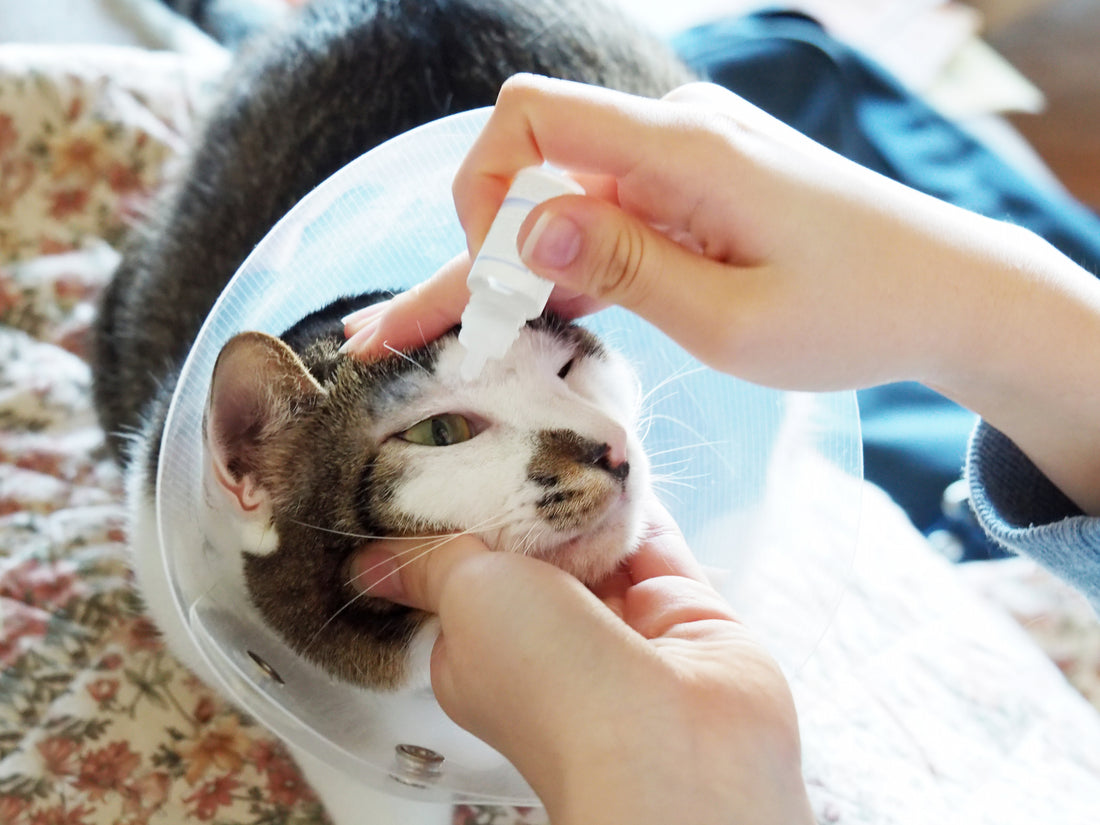
Your Cat's Weepy Eyes are the Sign of a Conjunctivitis Issue
Cat’s aren’t known to cry like humans are, which is why many pet owners become alarmed when they see watery discharge pooling in the corners of their cat’s eyes. This discharge is relatively normal—usually, it’s an automatic response to clean away debris or irritants that may have found their way into your cat’s eyes. It should clear up within the same day; consistently weepy eyes may be indicative of a bigger problem.
The outer coating of your cat’s eyes is call the tear film. Much like in humans, the tear film works to moisturize the eyes and clear away debris, as well as to fight against infections. Weepy, tearful eyes might indicate that your cat’s eyes are battling bacteria or viruses. Usually, these infections will go away on their own as the immune system suppresses them, but the infection may take over. This often causes conjunctivitis, otherwise known as pinkeye.
Yes—your cats can get pinkeye, and it’s extremely common and often extremely contagious. Conjunctivitis is characterized as inflammation of the pink membrane around the eye, and can result in discharge, squinting and redness. Other symptoms may include:
- Excessive blinking
- Eyes swollen shut
- Pawing or rubbing at eye
- Red or pink and inflamed tissue surrounding the eye
- Squinting
- Watery or mucoid discharge (possibly clear, yellow, green or dark red)
Where does conjunctivitis come from?
Conjunctivitis is the most common eye problem in cats and can be caused by a variety of things, including infections, allergies and more.
- Viral infections: Viruses, such as feline herpesvirus or Calicivirus, can infect your cat’s body and cause a myriad of cold and flu-like symptoms such as sneezing and fever. Conjunctivitis is another one of these symptoms.
- Bacterial infections: Bacteria can also infect the eye and cause conjunctivitis. Mycoplasma and feline Chlamydophila are two of the most common bacterial infections in cats.
- Allergies: Cats can be allergic to many things, much like humans, including pollen, mildew, dust, perfumes and certain foods. The presence of an allergen may trigger a physical allergy response, sometimes in the form of conjunctivitis.
- Debris: A piece of debris, such as sand, litter or dust, may be lodged in your cat’s eye. If the eye is unable to clear it away with tears, inflammation may occur because of irritation.
- Dry eye: Some cats do not produce enough tears, resulting in drier eyes than normal, causing conjunctivitis.
- Injury: Physical trauma to the eye, such as a corneal scratch, can cause inflammation and other eye problems. Injuries can also be sources of bacterial infections.
Clearing your cat’s conjunctivitis
One of the main treatments for all causes of conjunctivitis are saline solution washes for the affected eyes. Additionally, cat owners can remove discharge using a dampened cotton ball. Always remember to wash your hands before and after going near your cat’s eyes.
Conjunctivitis typically clears up on its own within a few days, but if your cat appears to be in pain or you’re worried about it spreading to your other pets, take your cat into the vet to be checked out. More specific treatments will depend on what the cause is. The vet will need to inspect the cat’s eyes and determine the true cause of inflammation to proceed with the correct course of treatment.
For viral infections, your vet may recommend using antiviral eyedrops to clear the problem. Typically, cats will also develop a secondary bacterial infection along with a viral one, so the vet may put your kitty on antibiotics, as well as other medications to minimize the symptoms of the virus. For feline herpesvirus, there is no cure, and medications seek to minimize symptoms.
In the case of bacterial infections, your vet may prescribe an antibiotic ointment for use on the infected eye.
If your vet determines that the conjunctivitis is not due to any kind of infection, further inspection may be necessary to determine if inflammation is caused by a foreign object or debris, injury or allergen. The debris may be removed as soon as it is discovered. Physical trauma will need time to heal on its own in most cases. Allergens will need to be identified through more rigorous testing and then avoided after the visit. Moisturizing eye drops may also help cats suffering from dry eye.
Weepy eyes no more
Conjunctivitis symptoms typically last between four days and two weeks, and, depending on the nature of the underlying problem, may return over time. Remain attentive to your cat’s eyes and the color and type of its discharge to help determine when to revisit a vet and make sure your cat is in pain. After the inflammation has cleared away, your cat should be able to see clearly without problems!


